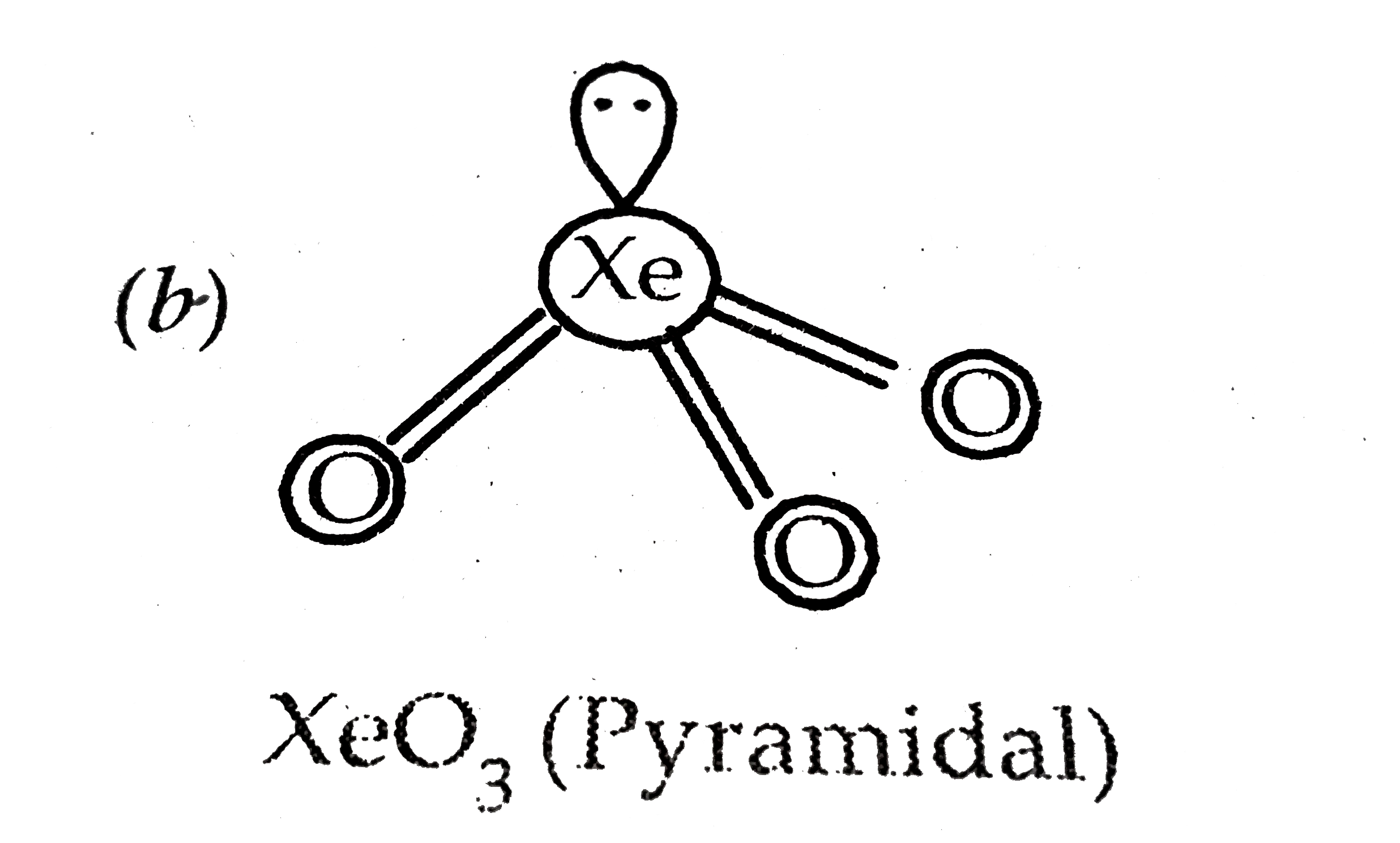(a) Account for the following :
(i) PCl5 is more covalent than PCl3.
(ii) Iron on reaction with HCl forms FeCl2 and not FeCl3.
(b) Draw sturcture of XeO3.
Video Solution
Text Solution
(i) It is difficult to lose all the three electrons to form p3+ or even more difficult to lose all the five valence electrons to form p5+ ions. Therefore, higher elements have no tendency to form ionic compounds. Instead they form covalent compounds by sharing of electrons.
Since elements in the +5 oxidation state have less tendency to lose electrons than in the +3 oxidation state. Hence, elements in the +5 oxidation state have more tendency to share electrons than in the +3 oxidation state. Thus, elements in the +5 oxidation state are more covalent than in the +3 oxidation state.
(ii) Fe reacts with HCl to form FeCl2 and H2,
Fe+2HCl→FeCl2+H2
H2 thus liberated prevents the oxidation of FeCl2 to FeCl3.
(b) 
|
Similar Questions
Knowledge Check
The reaction of toluene with Cl2 in presence of FeCl3 gives :
Abenzoyl chlorideBbenzyl chlorideCo - and p - chlorotolueneDm-chlorotolueneBenzene reacts with Cl2 in the presence of FeCl3 and in absence of sunlight to form :
Abenzyl chlorideBbenzal chlorideCchlorobenzeneDbenzenehexa chloride
Complete the following :
(i) R−OH+PCl5→
(ii) R−OH+PCl3→
View SolutionPCl5Δ−−→PCl3+Cl2
View SolutionPCl5Δ−−→PCl3+Cl2
View Solution(a) Account for the following :
(i) Ozone is thermodynamically unstable.
(ii) Solid PCl5 is ionic in nature.
(iii) Fluorine forms only one oxoacid HOF.
View SolutionWhich is more stable PCl5 or PCl3 ?
View SolutionDraw the structure of the following:
(i) BrF3
(ii) XeO3
View Solution
